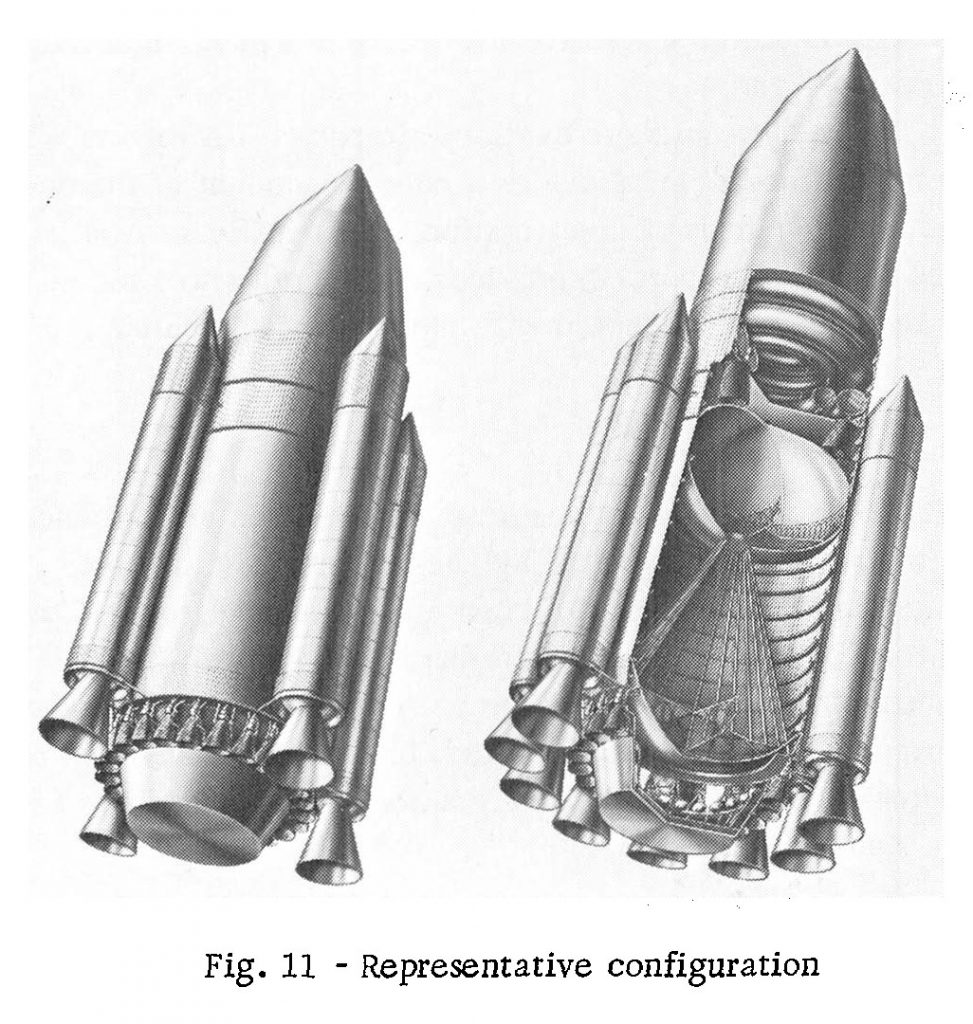Almost certainly the most powerful launch vehicle ever given serious consideration and actual design work was Boeing’s Large Multipurpose Launch Vehicle from 1968. Designed under contract to NASA,the LMLV was designed to be very modular, using a core vehicle that was a perfectly serviceable single stage to orbit launcher, with the option of adding upper stages and various numbers of strap-on solid rocket boosters. it was a large vehicle, seemingly in line with the Nova/Post-Saturn vehicles designed only five years before. But the LMLV was quite different in some respects: it was entirely expendable. With no need to even try to recover the core, no mass was expended on recovery systems, or strengthening the structure to withstand splashdown, or making sure the engines could survive many firings with minimal damage. Instead, every ounce was to be shaved off. The result was a vehicle of astounding launch capability.
The basic core was capable of putting a payload of one million pounds into a 100 nautical mile circular orbit. This equaled or exceeded the capability of the majority of the Nova/Post-Saturn designs,and did so without any augmentation. But it was designed for augmentation. up to twelve 260″ diameter solid rocket boosters could be added; without an upper stage, this configuration could orbit 3.5 million pounds.This would result in a vehicle weight 66,257,000 pounds at liftoff, with a takeoff thrust of 108 million pounds. This would be LOUD. But if ten 372″ boosters were used, the payload would increase to 4.2 million pounds. This was many times the payload of the Saturn V; the payloads intended for this vehicle were generally manned interplanetary (typically Mars) spacecraft and the millions of pounds of liquid hydrogen propellant that they needed.
